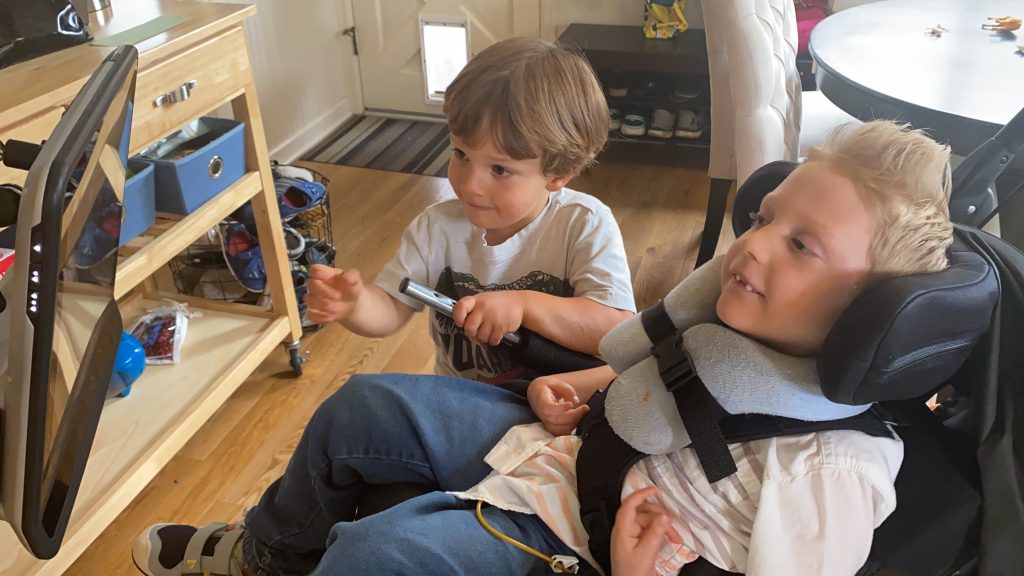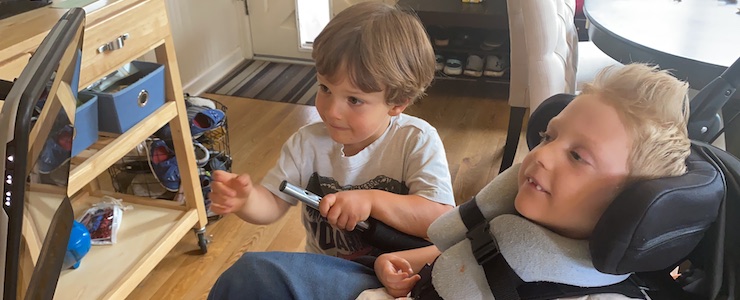
About this series:
The start of the school year is fast approaching. With no clear path forward for students who receive special education, we have invited parents to share their perspectives on the challenges they face in trying to make decisions during these incredibly difficult times. We recognize that every situation is different, and that every family is making the best choices they can. Our hope is that families can borrow ideas from each other, and that educators can also gain insight and help create solutions. If you have a story you would like to contribute for this series, please send us an email.
Where there is a will, we must find a way
by Adrienne Stuart
Before COVID-19 devastated our world, students with disabilities were already struggling to get the education guaranteed to them under the law. Our family has had to spend thousands of dollars on attorney fees and hundreds of hours on citizen complaints just to get our kids the inclusive education they’re entitled to under IDEA.
Here in Washington State, when it became clear in March that it was going to be difficult to educate students in person, the Office of Superintendent of Public Instruction initiated rule making which allowed schools to collect all of their funding by merely making educational opportunities “available” to students.
Specifically, OSPI amended their rules by stating, “instructional hours…[a]re not limited to in-person educational services. Local education agencies may count as instructional hours towards the minimum district-wide annual average those hours of educational activity planned by and under the direction of school district staff that are delivered through learning modalities which may include but are not limited to distance learning, hybrid classrooms, rotating schedules, or other methods that allow for delivery of basic education services during the COVID-19 epidemic.”
This definition is problematic for all students, but it is especially cruel for students with disabilities who rely on in person services to access a free and appropriate public education. As with most kids with disabilities, our son Jack receives several therapies at school, including speech therapy and occupational therapy.
He is an emerging communicator and just got his Tobii eye gaze device in January, so we’ve been heavily reliant on the school to help us learn how to communicate with Jack, and to help him learn how to communicate with his peers. When school abruptly ended in the middle of March, Jack was immediately cut off from his beloved para educator, his friends, his teachers, and his therapies. In fact, we were told that he could not have his paraeducator read a story to him on a Zoom call once per week because paraeducators are not allowed to be alone with 1:1 with students.
What is frustrating for me and for many parents I know is that reopening public schools is not prioritized. We have private schools and daycares open, but not public schools. This is a problem for children with disabilities because for the most part, private schools and daycares do not receive federal funds are not required to extend the protections of the Individuals with Disabilities Act (IDEA) to students with disabilities. IDEA requires public schools to deliver not only traditional education services, but also accommodations, therapies, and itinerant support services for disabled children.
We’ve opened marijuana dispensaries, casinos, home improvement stores, courts, restaurants, pet grooming, hair salons, indoor spiritual religious gatherings, construction, manufacturing, and more. We’ve done it intentionally, adding as much safety and personal protective equipment as possible. We’ve determined that these businesses are essential enough to our society that we’re willing to figure out how to open them as safely as possible.
Families who do not want to send their children to school should have the means and resources to help their kids be educated in the relative safety of their homes. But families who do want or need to send their children to school should also have that option. We’ve proven that we’re willing to figure out how to persevere and open private schools and daycares. We’ve proven that as a society, where there is the will, there is the way.
Moving forward, we must figure out ways to effectively meet the needs of students who rely on supports and therapies guaranteed under federal law, and we must consider all creative and individualized options that will help get us there.
Adrienne Stuart is Director of Public Policy for the WA State Developmental Disabilities Council. These are her views as a parent, and are not necessarily the position of the DDC. She can be reached here.
Related Articles
Distance Learning: Not an Easy Choice, by Michelle O’Dell
Resources
Advocacy & Support
Arc Chapters
PAVE
Parent to Parent
Office of Education Ombuds
Washington Autism Alliance and Advocacy
Education Guidelines
Office of Superintendent of Public Instruction
Summary of Reopening Washington Schools 2020: Special Education Guidance
Legal
Northwest Justice Special Education Clinic
Technology and Communications
Internet and phone resources. Locate free cell phones, low cost internet service, and other assistive technology resources.
Telecommunication Equipment Distribution (TED) Program. Devices and apps for anyone who lives in Washington State (over age 4) and who is deaf, hard of hearing, deaf-blind, or has difficulty with speech.
Other Resources
Office of Education Ombuds: Back to School Planning for Remote Education





